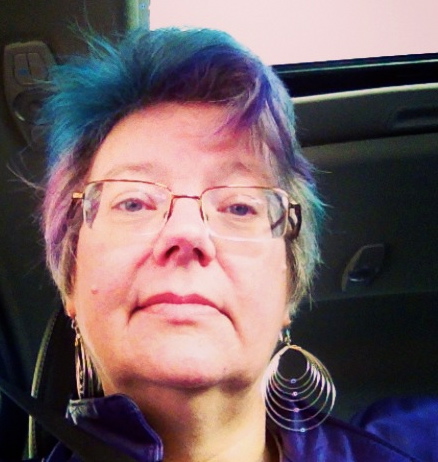
So now I’ve worked my way through BEST SERVED COLD and am on the third volume of the First Law trilogy, which starts with THE BLADE ITSELF (and I can tell I’m going back to read both of the first two, in order to see better how they fit with the First Law trilogy). I’ve got to say, gee whiz, when Delany is talking about how you can only write stuff as good as the best stuff you’re reading, this is the sort of thing he’s talking about, because I know I’ve learned a good bit about the subject matter mentioned in the title from looking to see how Abercrombie does it.
The books have multiple POVs. A frighteningly large number of them, and I say that as someone who’s worked with them in a novel and seen how complicated and yucky and full of snarls that particular brand of yarn can be. In THE HEROES, the POVs aren’t restricted to main characters – sometimes the writing does things like dip briefly but deeply into the mind of a secondary character who’s about to get killed on the next page.
Where those POVs overlap, their collision creates additional meaning. For example, there’s a lengthy section in the head of Logen, a Northman, about how unnatural he finds the privies in the southern castle he’s visiting. A bit later, while in the POV of another character, we see him look upset at the possibility that an assassin might have crawled up through one of them, and because of that earlier section, that look takes on a deeper meaning, to the point where another character sees him still looking at the latrine door suspiciously, the effect is wonderfully funny.
Often the same encounter is seen through multiple eyes, letting us see where people go wrong. It’s a very powerful strategy, perhaps because it invokes a certain frustration on the part of the reader without getting TOO frustrating to the moment where you end up with a moment where you just want to scream at the characters, “WHAT are you thinking?” And characters thinking about each other and their relationship, particularly a relationship that keeps changing, works so beautifully, so wonderfully, for developing character and relationship and even plotline, that I’m in awe.
I’ve got to say that one of my favorite moments is in BEST SERVED COLD, and you should stop right now if you haven’t read it, because I really don’t want to spoil this for you. There’s a section where the POV is shifting rapidly back and forth between two characters, and we think they’re in the same place only to find at the end of the passage that everything the reader thought was, in fact, wrong. It’s gorgeous. If I were the jealous sort of writer, I think it would make me want to hit Joe and then go weep with despair.
Fortunately (probably for both of us), I’m not. Instead I’m looking to see how he does all this so I can steal freely. In fact, in the latest story I finished, I noticed a transition where one character is starting a thought and another is finishing it, that I’m pretty sure came from this reading.
So for those reading this trying to create their own transitions – here’s one strategy that Abercrombie seems to use often. Is there something – an object, a phrase, a circumstance of weather – in one scene’s ending that can be used in the next scene’s beginning? Some examples:
- First scene ends with an observation about the snow; the following begins with an expansion on that.
- First scene contains mention of a particular character; the following is from that character’s POV.
- First scene someone wonders what a particular character is doing and imagines their circumstances; following scene is from that character’s POV and shows how wrong the imagining was.
Movies do this a lot. We close with a shot of one object; a similar shot begins the next scene. Someone says something to close a scene; in the next it’s repeated or answered. We close on a landscape at a particular time and open with it transformed by a different setting in time. These transitions give a feeling of completeness. Rather than separate pieces jammed together like a mosaic, they’re woven together, threads from one leading into and changing another. Transitions lead the reader along, let her/him swing from vine to vine like Tarzan, each one a new handhold on their journey through the narrative.
And with that tortured metaphor, peace out.
Enjoy this writing advice and want more like it? Check out the classes Cat gives via the Rambo Academy for Wayward Writers, which offers both on-demand and live online writing classes for fantasy and science fiction writers from Cat and other authors, including Ann Leckie, Seanan McGuire, Fran Wilde and other talents! All classes include three free slots.
Prefer to opt for weekly interaction, advice, opportunities to ask questions, and access to the Chez Rambo Discord community and critique group? Check out Cat’s Patreon. Or sample her writing here.







4 Responses
This is going to sound so weird, but the same transitions that I enjoy from Abercrombie I first noticed in work by Adam Reed and Matt Thompson, who created the Adult Swim show Sealab 2021. If you’ve watched any of their work, including Frisky Dingo or Archer, you can see that same clever method of letting one character start a thought at the end of a scene and the other pick it up at the beginning of the next. So when I started reading Abercrombie I was highly amused to experience it as if it was a serious, blood-splattered cartoon.
That one back-and-forth series of scenes you were referring to in Best Served Cold made Seamus and I laugh uproariously when we were reading it… we were on a long car trip, so I suppose we’re lucky to have survived our mirth 🙂
I love Archer! You’re right, they do that a lot.
Reading Joe’s work was probably influential on my decision to do a book in omni and not third person limited. I wanted that cinematic feeling that a huge cast of characters can bring to a book, and I loved the way he pulls his reader through a story with every character’s perspective a separate but necessary piece of the whole. Like a big, tangled knot.
There are a few other authors who master a wide cast, but he does a great job of giving depth and using the POV’s to play off each other. Definitely one to read and learn from.